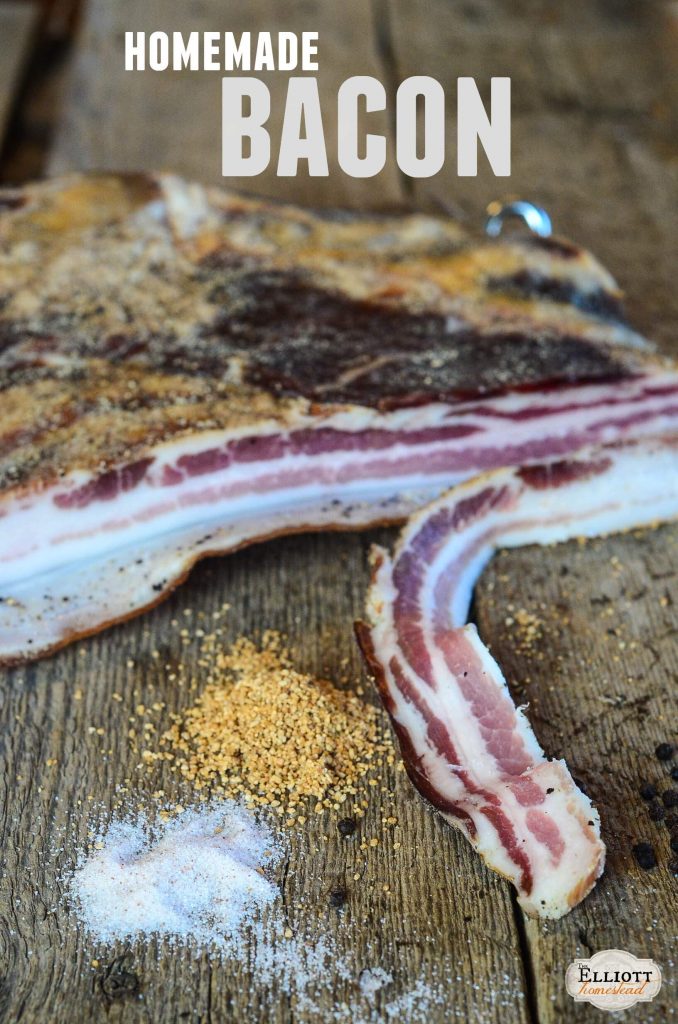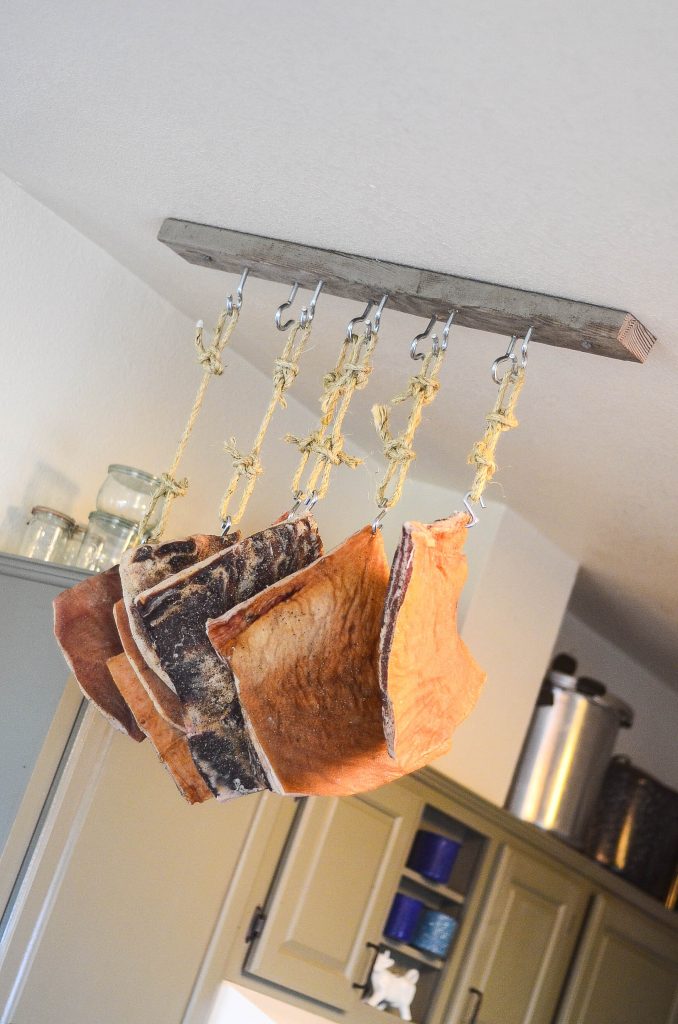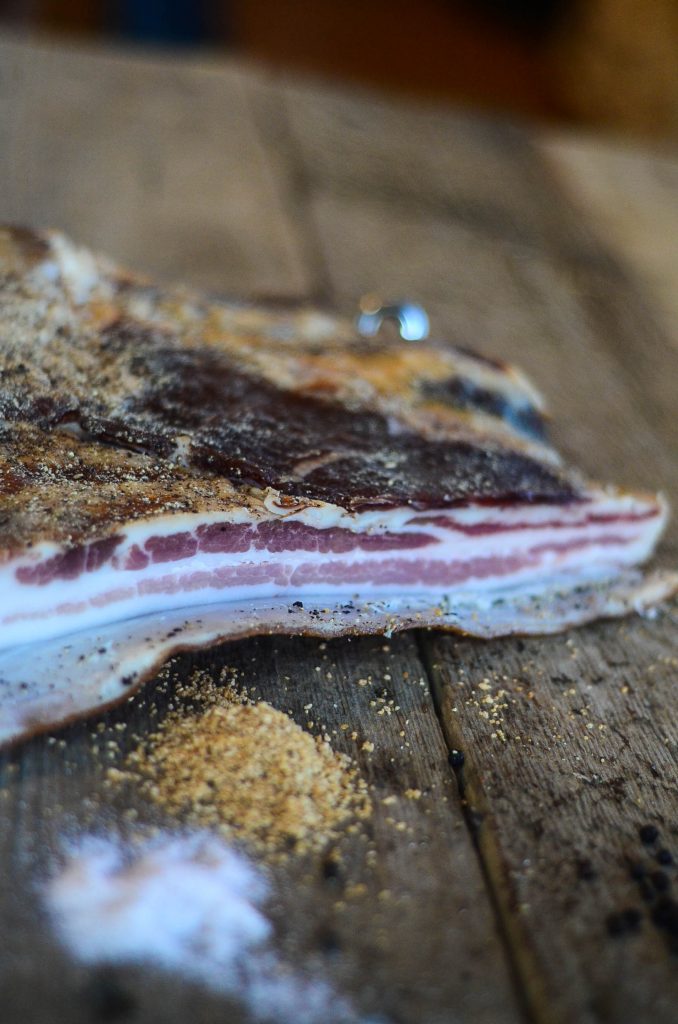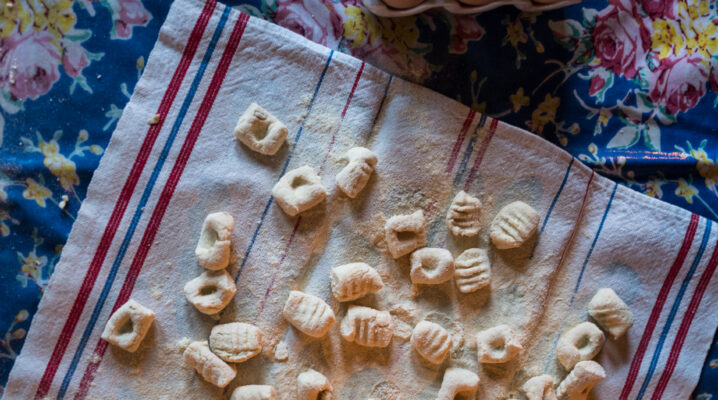
Back in the day, people knew how to do cool things.
Well, I think they're cool.
Well, really, I can't be the only one in the world that thinks it's exceptionally cool to cure pork belly and have it hanging in your kitchen.

A few weeks ago, we butchered our pigs, and have been enjoying the fruit of our labors. And man, oh man, oh man, ohhh man, is it delicious. And just a few days ago, we were finally able to consume our much awaited bacon and pork cheeks. For the past two weeks, it'd been curing in our refrigerator – slowly leeching itself of water and stabilizing for long term storage.
The process was simple. But new to me.
Because I'm from this day and age, when doing cool things like curing pork belly and having it hang in your kitchen is not common knowledge.
Luckily, I'm not afraid to learn new things. Nor am I afraid to try them. Some of the greatest experiences in my life have come from trying new things.
And thus, I learned. And tried. And succeeded! Thanks in part to this wonderful post from Reformation Acres and also in part to the wonderful Farmstead Meatsmith and his beautiful wife, Lauren, who has been helping assure me along my way. Because to learn cool things you need help. And I've been blessed with the most wonderful bacon-loving helpers an ‘ol farmgirl could ask for.

Homemade Bacon (dry cured and air dried)
Before you get started, don't forget, I created a recipe card just for readers of this post. If you want it, I'll send it right over – just click here.
You will need:
– Fresh pork belly from the best quality hog you can find (if you can't grow your own pigs yet, try and find a local pork farmer! or talk to a high-quality local butcher).
– Dehydrated whole cane sugar, about 6 cups
– Coarse sea salt, about 6 cups
1. Combine the sugar and salt. Generously rub the flesh side of the pork belly with the mixture.
2. Rub the sugar and salt into the flesh some more.
3. Did I mention you need to rub the ‘ol pork belly down with the sugar and salt? The sides too. Make sure to get any pockets or under bits of fat – anywhere where water could accumulate. All of it, man.
4. Stack the pork belly slab (or slabs) into the large plastic bin. Stick in the refrigerator and forget about it until the next day. Dump the accumulated liquid out of the plastic bin and rerub the flesh with the sugar and salt. Stack it all back in the tub and stick it in the fridge again.
5. The next day, dump out any accumulated liquid and rub the sugar and salt mixture on any part of the pork belly where the salt and sugar has been completely dissolved. A thin layer will do. Repeat this process every day until liquid stops accumulating in the bin. Ours took about 10 days.
6. Rinse the pork belly under water, using your fingertips to scrub off any remaining sugar and salt. Pat dry.
7. Voila! Cured bacon. We ran meat hooks through ours and hung it up in the kitchen.

Waiiiit, Shaye, what was that you said? You hung it up in the kitchen? Won't it rot?
Nope.
Why? How is that possible?
The dry salt curing takes care of the bacteria in the meat. As the bacon sits out, the surface dries out, and this prevents new bacteria from forming. It's incredibly, really, that the salt can make the meat and fat stable at room temperature. Think of it just like a meat jerky – but not quite as hard (same concept). We're simply using salt and air to moderate bacteria growth.
The bacon will last for months at room temperature (though it will continue to dry out little by little as time goes on) and should be inspected daily for signs of rancidity or any insect problems.
But how can I prevent insects from bothering my meat?
Great question, reader. We have completely coated the flesh side of our pork belly with freshly ground black pepper. This has completely deterred the flies, thus far. On top of that, loosely wrapping the bacon slabs in a vey breathable cheese cloth (like this one) is another great water to deter any flies from landing on the meat. Should you notice any fly eggs, a quick rub with a clean washcloth that's been dipped in vinegar is sufficient to clean up the pork.
It may sound completely foreign to our refrigerator-driven culture to cure meats in such a way. But this was how it was done for thousands of years before the luxury of refrigeration. And frankly, I've discovered the taste to be unlike anything I've ever experienced. It's like bacon. Times a million. The subtle flavors are much more pronounced and will only get better with a bit of time.
These slabs of home grown, home harvested, and home cured pork belly hanging from my kitchen ceiling make me so happy, it almost puts me at loss for words. Learning, diligence, hard work, perseverance, and adventure is wrapped up inside of them. They represent our farm. Our journey. Our love for food. And not only food, but food that has a story. That has a meaning.
Kicking back to these old school methods of preservation is a way of not only connecting with times past, but learning from it, and getting to be a part of them. It's reconnecting with a lost knowledge and skill set that I believe still holds significant value.
Sorry. That was deep.
But my passion for this bacon is so serious, it's caused some pretty intense emotions.
Homemade bacon. My love.
Amen.
For other great meal ideas, check out The Elliott Homestead Cooking Community HERE




